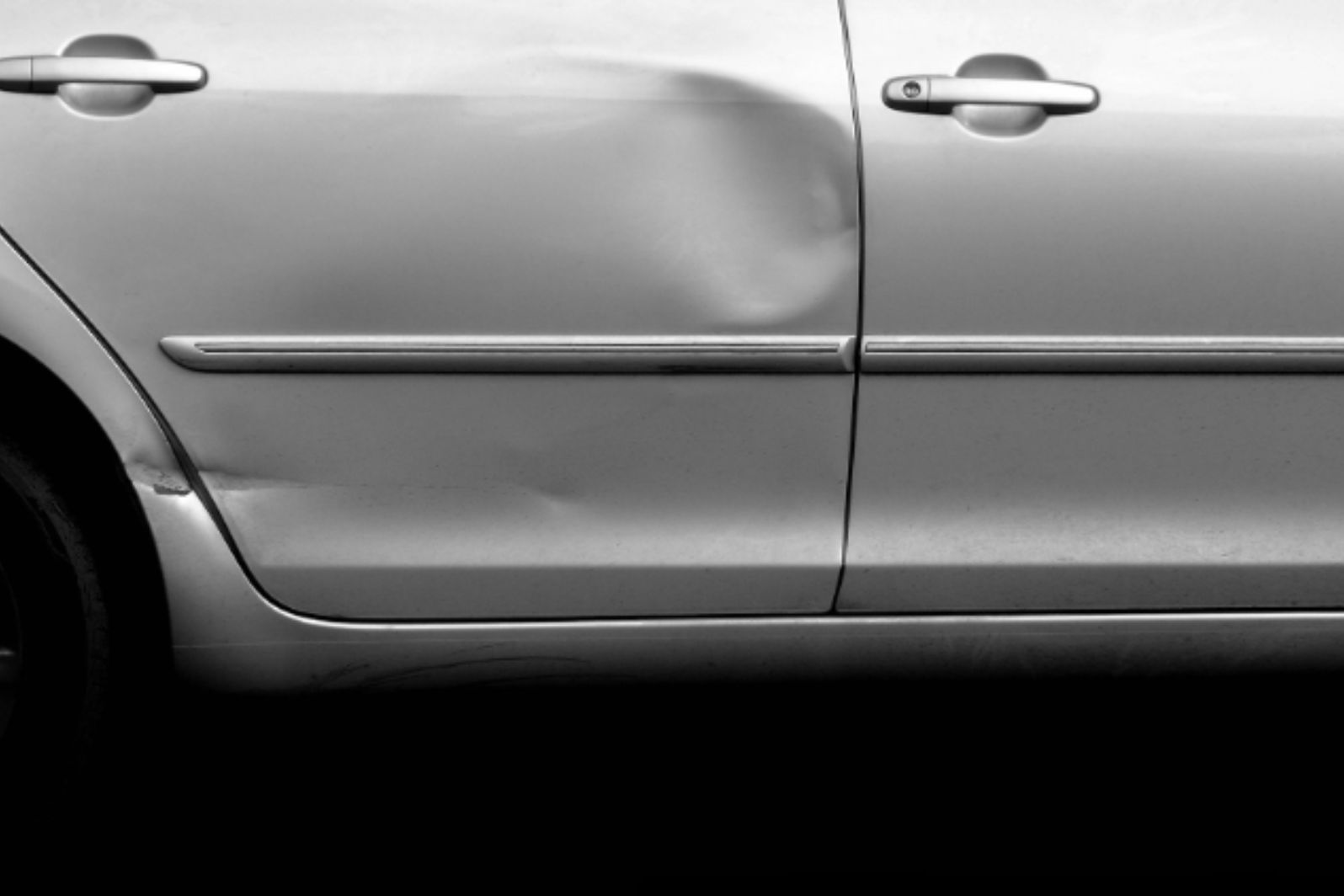We’ve all been there, walking out to our car in a parking lot only to find an unsightly door ding staring back at us. Those car dents can be a real eyesore, especially on a car you take pride in.
But fear not; a dented car door is not a life sentence! With a little know-how and a bit of patience, you can make those door dings disappear.
In this article, we’ll walk you through 3 key tips for repairing door dings effortlessly and restoring your car to its former glory. Let’s get started!
Table of Contents
Tip 1: Invest in a PDR Blending Hammer
The Paintless Dent Repair (PDR) blending hammer is specifically designed to work on door dings or small dents and can help you achieve professional-looking results at home. It works by gently massaging out the dent from the inside without causing any damage to the paint.
When using the hammer, it’s important to be patient and work slowly. Rushing can lead to further damage or an uneven surface.
So start by cleaning the area around the dent to have a clear view. Then, using a bright light, identify the most depressed area of the dent.
Next, position the hammer at the edge of the dent. The aim is to push the dent out from the inside, so the hammer should be positioned at the edge of the dent, facing the dent’s center.
Begin to apply gentle pressure using the hammer, starting from the edges and slowly moving toward the center of the dent. Remember, the key here is to be patient and avoid rushing. You’re not trying to force the dent out in one go, but rather massage it out gradually.
Regularly pause and check your progress. Adjust your approach based on the changes in the dent’s appearance. Continue applying gentle pressure, moving from the edges towards the center, until the dent is completely gone.
Remember, the process of using the PDR blending hammer to fix a dent is a skill that improves with practice. Over time, you’ll find yourself being able to repair door dings and minor dents with relative ease.
Tip 2: Try a Plunger
Yes, you read that right – a plunger can also be used to repair door dings! This household tool is not just for unclogging drains; it can also help pop out small dents from your car.
Start by cleaning both the plunger and the dented area on your car. This ensures a strong seal which is crucial for this method to work. You can simply use warm, soapy water and a clean cloth for this step. Then, you need to wet the rim of the plunger. A wet plunger creates a better seal on the car’s dented surface.
Next, place the plunger over the dent. Make sure it’s centered and covers the entire dent. The plunger should be parallel to the car’s surface for the best results. Then push the plunger in, as you would when unclogging a drain, until you feel a strong suction.
After that, slowly pull the plunger back without releasing the pressure. This action should pull the dented metal of your car back into place. You might need to repeat the push-and-pull action a few times until the dent pops back out.
Once you’re done, check the results. If the dent is still there, you might have to repeat the process a few more times.
Using a plunger is a quick and DIY-friendly method to fix larger dents, but it might not be perfect. So for more severe dents or if this method doesn’t fully fix the problem, you might need to seek professional help. However, in many cases, this simple technique can significantly improve the appearance of your car.
Tip 3: Use Dry Ice for Larger Dents
Dry ice is frozen carbon dioxide and it’s extremely cold. This extreme temperature difference causes the metal to contract, which can pop out the dent. However, before trying this method, remember to handle it with care and always use gloves.
Dry ice is extremely cold and can cause severe cold burns or frostbite if it comes into direct contact with the skin. Moreover, as it sublimates, it turns directly into carbon dioxide gas which can be hazardous in a poorly ventilated area. So it’s of the utmost importance to wear insulated gloves and eye protection when handling dry ice and to ensure that you’re working in a well-ventilated area.
Once you have worn protective clothing and gear, you can start this method by cleaning the dented area on your car to remove any dirt or grime. This will allow the dry ice to come in direct contact with the dent.
Next, place a small piece of aluminum foil over the dent. This will act as a barrier between the dry ice and your car’s paint, preventing any potential damage.
Afterward, put on your gloves and take a chunk of dry ice. Holding it with tongs or a towel, carefully rub it over the aluminum foil covering the dent. Make sure to move the dry ice around constantly and not let it rest in one spot for too long to avoid damaging the paint.
Continue this process until you can see the dent start to recover its original shape. If the dent doesn’t budge on the first try, don’t be discouraged. It could take a few tries to fully remove the dent with dry ice.
This method works best for large and shallow dents. But when doing this, always remember to handle dry ice safely. If the dent is too serious or the dry ice method does not work, consider seeking professional help.
Repairing Door Dings Requires Hard Work and Resourcefulness
Repairing door dings doesn’t necessarily require an expensive trip to the auto body shop. With a few basic tools and materials, you can restore your car’s appearance significantly.
The key is patience, taking your time, and applying these methods responsibly and carefully. With practice, you’ll become more adept at how to fix a dent or ding on your vehicle. If a dent seems too severe or these methods don’t work as expected, don’t hesitate to seek professional.
Happy repairing!
Did you find this article helpful? If so, check out the rest of our site for more.


